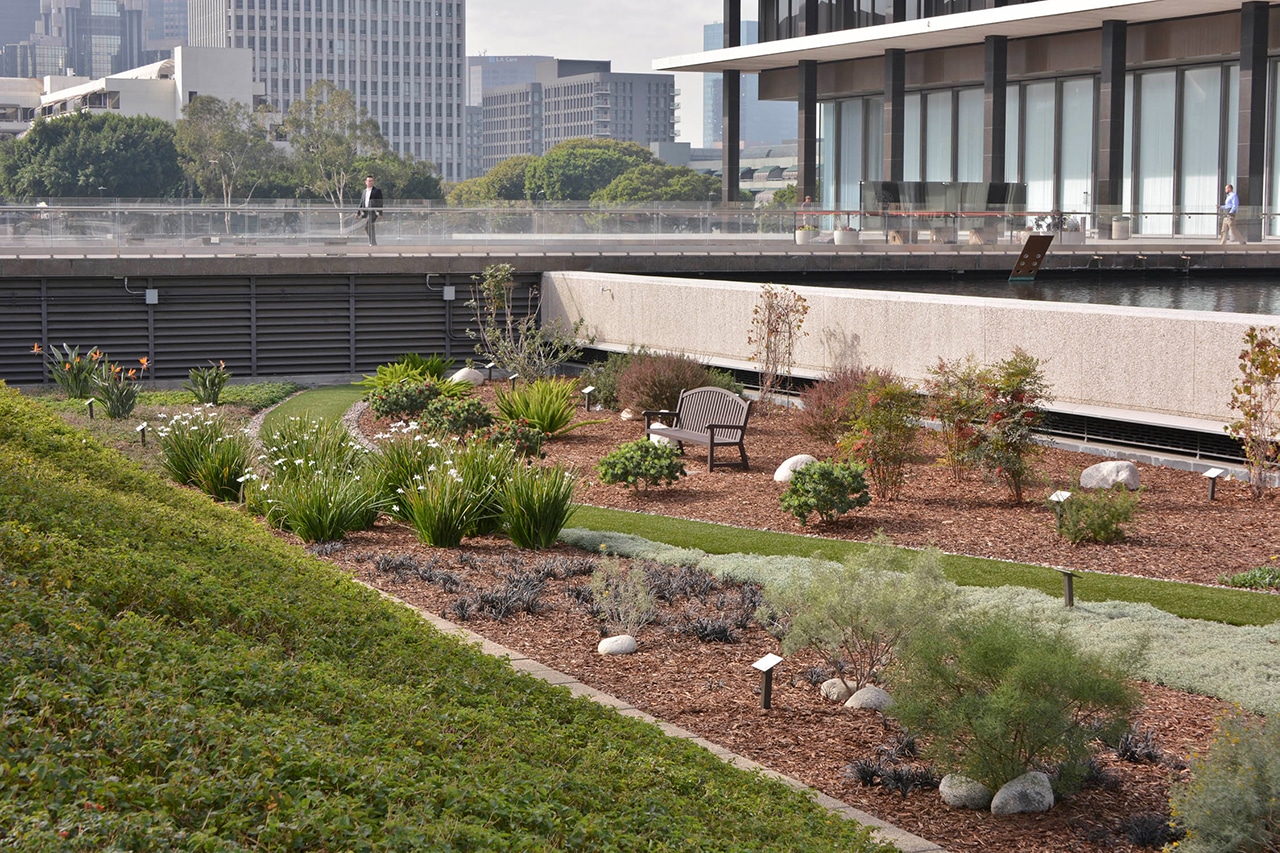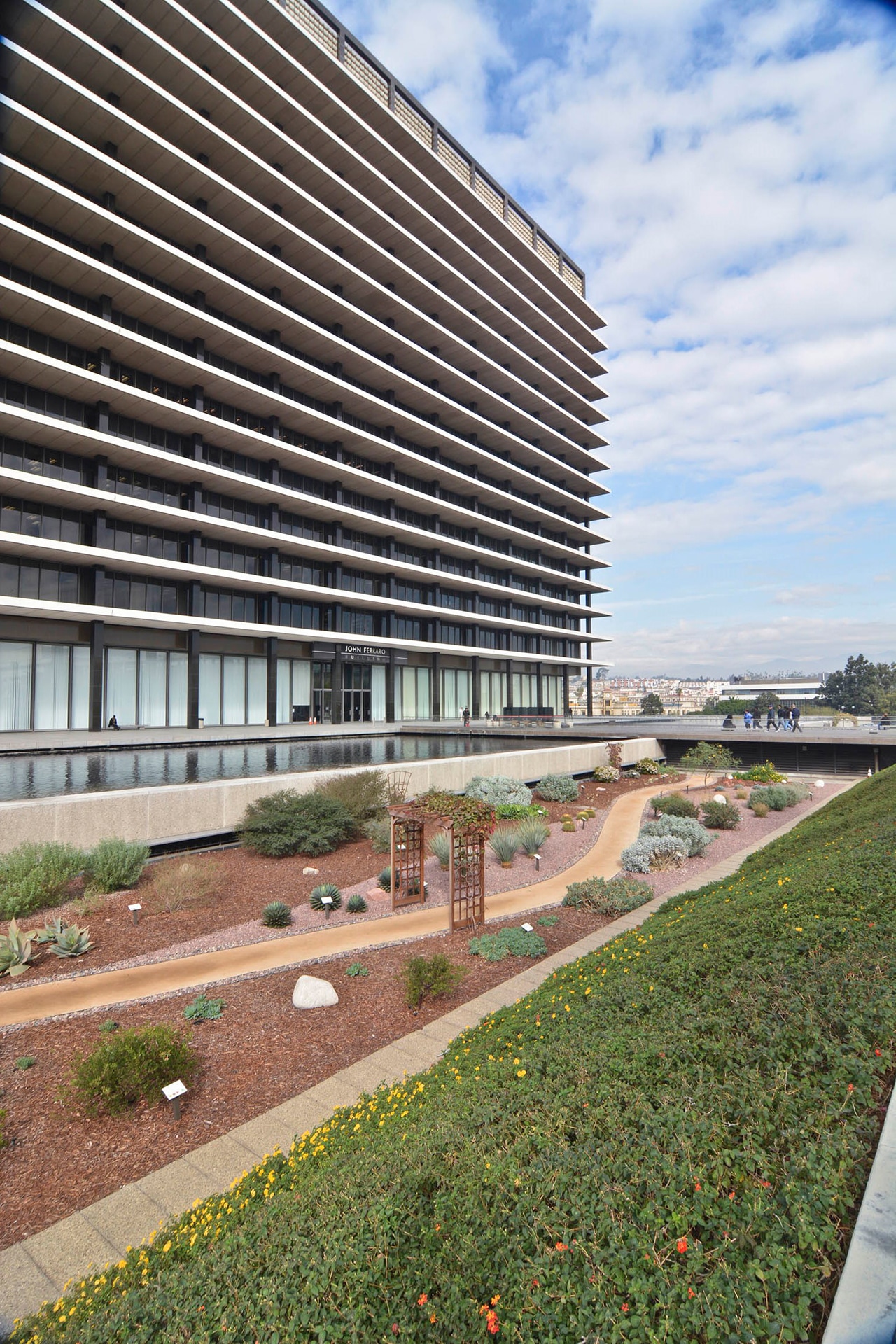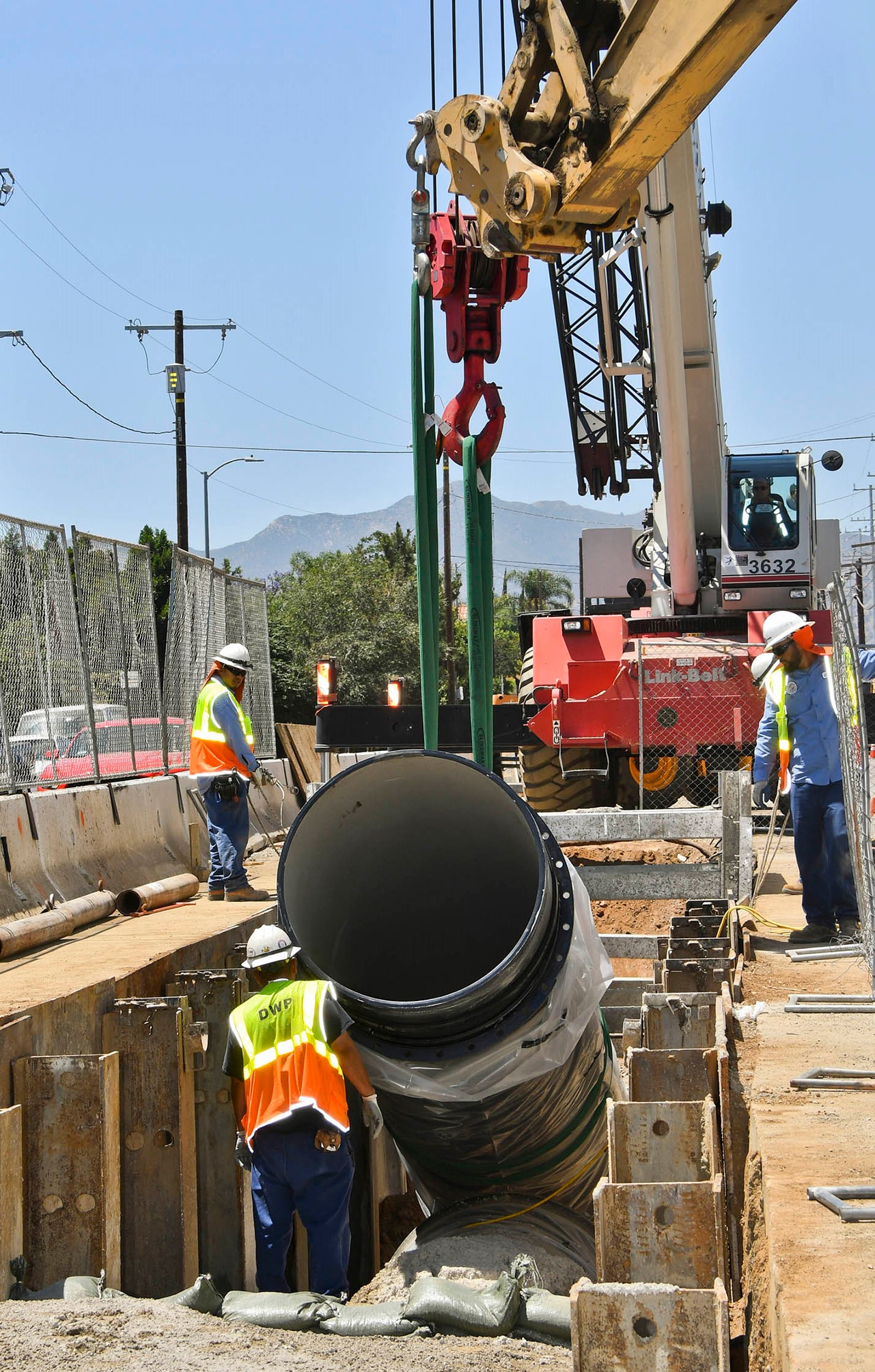
The Los Angeles Department of Water and Power is managing its resources in myriad ways, from conservation gardens to installing earthquake resistant ductile iron pipe. [Photo: Courtesy of LADWP]
The LADWP is adapting to better manage its water resources in light of climate change.
California has always been at risk of climate extremes. In a single year the state could suffer both epic drought and torrential rains, scorching wildfires and shattering quakes. At its heart, the City of Angels, with 4 million people and growing, has taken up the challenge to plan for a sustainable water supply in a changing climate future.
Throughout its 116-year history, the Los Angeles Department of Water and Power (LADWP) has continually developed the City of Los Angeles’ water supply, becoming a critical component of the city’s economic and population growth. “We are the largest municipal utility in the country. We were fundamental to the growth of LA from a sleepy little village to the second largest city in the country,” says Marty Adams, chief operating officer at LADWP.
As climate change throws an even bigger wrench in an already challenging situation, this innovative public utility has learned to change with the times—and has become an inspiring example of how to manage a major city’s water.

[Photo: Courtesy of LADWP]
How They Do It
LADWP is convinced the way forward lies within its own borders, cleaning up waters contaminated by years of industry, recycling and recharging groundwater, and changing its own culture. “Our generation is looking internally to make ourselves more self-reliant, less susceptible to climate variation, and more resilient in the face of earthquakes and other disasters,” Adams says.
One of the city’s biggest water goals originated with Mayor Eric Garcetti—sourcing 50% of LA’s water locally by 2035. It’s a lofty bar for a city that’s been importing water from hundreds of miles away for generations. But when LA looks to evolve, it doesn’t do it by halves. The city’s crown jewel in this effort is set to be its massive groundwater remediation program, recovering local water such as the San Fernando Groundwater Basin, an aquifer and superfund site once polluted by war-time industries, into high-quality sources of drinking water. The city broke ground on the $92 million North Hollywood West Groundwater Treatment Project in January 2018. It is expected to be completed by early 2020—one of four remediation projects to be constructed in the San Fernando Valley. Once clean, the basin could supply drinking water to more than 800,000 people.
Capturing, cleaning, and recycling water—such as water reuse and stormwater runoff—that would otherwise be lost is another critical method. “We’re teaming up with the Los Angeles Bureau of Sanitation to take more recycled water and put that to use, ideally get it back into the environment by recharging our groundwater basins,” he says. Local, community-based stormwater capture initiatives like the Woodman Multi-Beneficial Stormwater Capture Project further fuel this effort, improving aesthetics, educating the public, and cleaning up dirty water that would otherwise end up in rivers.

[Photo: Courtesy of LADWP]
Being Proactive
Building in more resiliency will also be crucial to protect water supplies in a geologically active region. For that, Mayor Garcetti has another goal, building 14 miles of earthquake resilient pipe by 2020, and LADWP is on track to meet it. Once complete it will be the longest, large-diameter earthquake resistant pipeline project in the nation.
Less glamorous but no less critical are methods like fixing up existing infrastructure and making sure water loss from breakage and aging pipes is at a minimum—and educating the public about water conservation. “Angelenos over a generation have done an amazing job of conserving water,” says Nancy Sutley, chief sustainability officer at LADWP. “We used basically around the same water in the 1970s as we do today, even though we’ve added more than a million people to our population.” And those numbers are dropping. “Our per person consumption in the mid-1970s was around 188 gallons per person per day. Our most recent numbers in a 12-month period are 112 gallons per person per day,” she says.
Supplying rebates for replacing water-hungry grass lawns with California-friendly landscaping and for replacing old washing machines, going door to door giving away (and installing) efficient toilets and showerheads, it all adds up to a massive culture shift sparked by LADWP. And this utility isn’t afraid to walk the walk, turning their own headquarters into a LEED Gold Facility and installing massive demonstration gardens to inspire and educate residents and local landscapers. “A new generation in LA has grown up turning off the water while brushing their teeth, putting buckets in the shower while it runs, and watering their plants with recycled water. People really practice water conservation here,” she says. “It’s become a way of life.”

